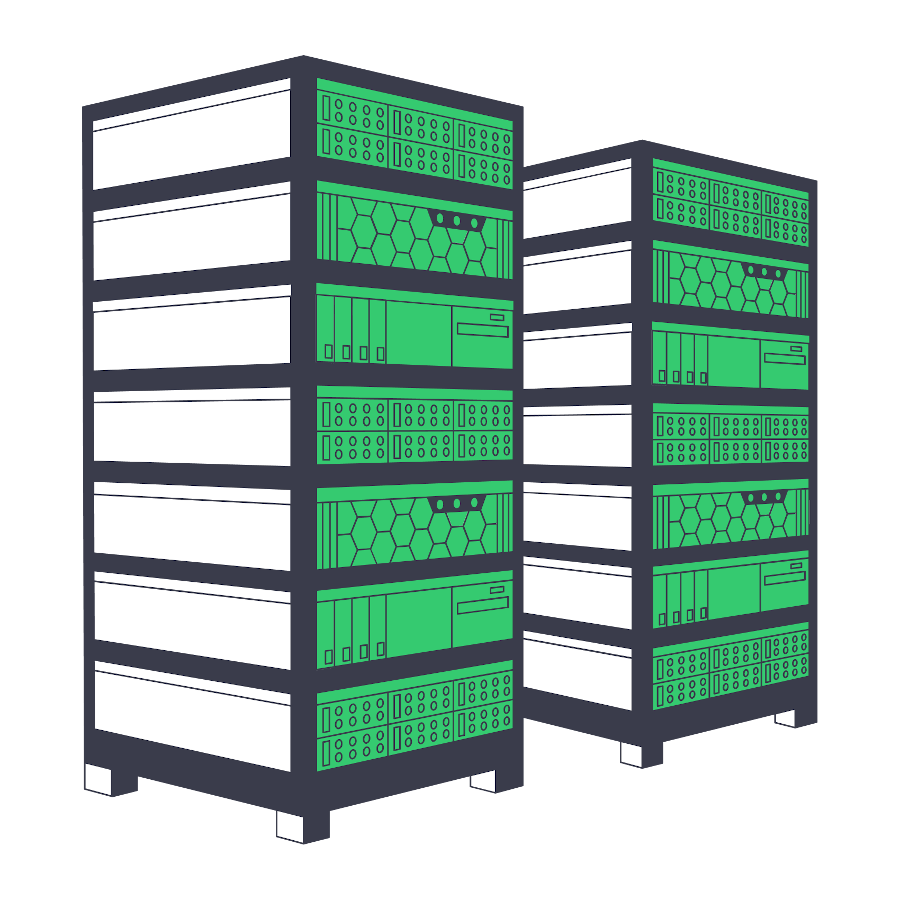Blog

Data center reliability levels. Tier 1, 2, 3, 4.
There are many parameters of data centers, which determine their reliability and cost of its services. In the first half of 1990s the Uptime Institute (USA) has developed a classification of data center reliability consisting of four levels (Tier 1, 2, 3, 4). Thanks to this, customers can clearly understand what to expect from the provider. It is worth to note that although only Uptime Institute Professional Services organization can issue the official certificate, the certification criteria are described in detail in the documentation, so some service providers may claim that they meet the requirements of a particular Tier.
What are the criteria for evaluation of reliability?
Levels of data centers differ in many ways, here are the main ones:
- Equipment redundancy. This parameter defines the presence of redundant components in the structure. These components provide failure-free operation, in case of failure of the main elements. Redundancy is carried out according to schemes N+1 (one backup component is added to each type of elements) and 2(N+1) (two parallel systems and a backup component for each type).
- Distribution paths. This is a characteristic of the organization of engineering systems: communication cables, cooling, power supply. Redundant distribution paths provide a high speed of service and increase fault tolerance.
- Carrying out maintenance without shutting down. High-level facilities are equipped with redundant components that allow you to repair and maintain equipment without interruptions.
- Total annual downtime. The number of hours per year when the servers are not available.
- The percentage of fault tolerance. The ratio of downtime to the length of the year.
Based on these criteria, each data center is assigned a certain Tier. The higher it is, the better.
Tier 1 - Basic level
Tier I is the lowest level of the data center according to this classification. Such a data center has a dedicated room for hardware and equipped with cooling systems and uninterruptible power supply. To receive a basic certificate, it must meet the parameter of maximum downtime of 28.8 hours a year. There may be no spare power generators, humidity and air conditioning controllers, and raised floors for routing utility cables and pipes.
If maintenance is needed, the entire system should be shut down. Current requirements for Internet projects in terms of speed of repairs and availability have stepped far ahead, so the technical capabilities of such structures are severely outdated.
Tier 2 - Capacity reservations
In addition to all the features of the previous one, the data center is equipped with spare uninterruptible power supply (UPS) and cooling units, raised floors for cables and pipes. The equipment is organized according to the N+1 scheme. Therefore, the probability of emergency situations is significantly reduced. However, during maintenance or troubleshooting, hosting services will have to be suspended. The regulatory downtime for Tier II is less than 22 hours per year.
Tier II Tier is often found on the market. Such hosting services are characterized by affordable prices and are used in small businesses, for which a short-term hosting outage does not imply big losses.
Tier 3 - Maintenance works without shutdowns
Tier 3 data centers are the most common, they are the optimal solution for IT projects that cannot tolerate long downtime and possible outages. In this case, only one of the data center systems remains active in operating mode. The maximum downtime is reduced to 1.6 hours thanks to the redundancy of the entire infrastructure. This makes it possible to carry out maintenance of the hardware without a complete shutdown.
In this regard, Tier III can be considered as highly fault-tolerant, with a very high degree of availability. It is used by many modern online projects and web-services of government agencies.
Tier 4 - Maximum fault tolerance
Tier 4 is the most reliable class of data centers. Its distinctive feature is the 100% duplication of all infrastructure components according to the 2(N+1) scheme. In addition, the structural blocks of the Tier IV data center are divided into separate sections on different premises. This gives complete independence and provides an annual downtime limit of only 26 minutes.
Such numbers are essential for IT projects and services for which a potential outage is simply not tolerated. However, building and maintaining such data centers is very expensive, which has a direct impact on the cost of hosting. Moreover, for many organizations, such characteristics are superfluous.
For convenience of comparison, all levels of data centers are presented in the table:
| Уровень надежности дата-центров | Резервирование оборудования | Распределение потоков | Возможность обслуживание без остановки ЦОД | Суммарный годовой простой, часов | Отказоустойчивость объекта, % |
| Tier 1 | no | no | no | 28,8 | 99,671 |
| Tier 2 | N+1 | yes | no | 22 | 99,749 |
| Tier 3 | N+1 | yes | yes | 1,6 | 99,982 |
| Tier 4 | 2(N+1) | yes | yes | 0,43 | 99,995 |
Which Tier to choose?
The choice of a data center should be based on the business goals. The key task for the client in this case is to find a balance between cost and acceptable indicators, because the higher the tier, the higher the hosting price. For critical infrastructure projects, where even the smallest failure may lead to serious losses, it is better to choose Tier 4 data centers. If you need high-quality and virtually trouble-free hosting - pick Tier 3 provider. Small projects can be hosted in the second tier. However, you need to keep in mind the possibility of some outages and backup your servers for a faster recovery.
It is worth mentioning that reliability is not the only criterion in determining the provider. The provider's expertise, the speed of technical support and geographical location are also very important here. Melbicom network is located in 14 Tier III and IV data centers in Europe, Africa, MENA, Asia, and North America.